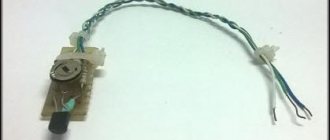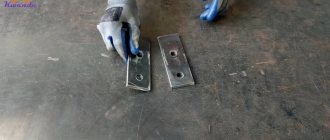Virtual reality technologies are rapidly gaining popularity among users. However, high-quality gadgets are expensive and not available to everyone. Getting into the world of VR doesn’t mean paying dearly. If you don’t have money, you can make these glasses yourself! Below are step-by-step instructions on how to make virtual reality glasses with your own hands from available materials.
How to make virtual reality glasses
In order to save money, game lovers assemble VR devices with their own hands from the simplest materials. The resulting do-it-yourself glasses for a smartphone make it possible to experience the features of games and watching videos in 3D format. If the device turns out to be successful, then you may not have to buy an expensive gadget.
What you need to assemble VR glasses at home
Before making virtual reality glasses at home, you need to do some preparatory work. First of all, you need to check your smartphone for compliance with all the requirements of virtual technologies. Otherwise, all further work is meaningless.
The main parameters will be as follows:
- Operating system Android 4.1 and higher.
- The diagonal size is at least 4.5 inches.
- Sensors: accelerometer, gyroscope, magnetometer, also known as digital compass.
The first two sensors are absolutely necessary, otherwise everything will be limited to just watching movies, and it will be impossible to fully use the technology.
Drawing of virtual reality glasses made of cardboard
Before you make VR glasses with your own hands, you need to choose the most suitable drawing for yourself. There are many options published on the Internet; as an example, we suggest considering a standard diagram.
The proposed drawings show holes for lenses of standard sizes. They should be adjusted to the actual parameters of the optics that are planned for use. The cardboard structure has a front part in which a recess for the bridge of the nose should be cut in advance.
DIY Google Cardboard
To assemble Google Cardboard with your own hands you will need: 1. A piece of thick cardboard. Corrugated cardboard can be found in design and art stores. For best results, you need to purchase a thin (1.5 mm) durable sheet with a minimum size of 22x56 cm. Such cardboard is also used in boxes by shoe manufacturers. 2. Two lenses. Diameter - 25 mm, focal length of lenses for classic drawing - 45 mm (5-7x magnification). To minimize distortion at the edges of the image, we recommend purchasing biconvex lenses. Enthusiasts extract them from office magnifiers, which are sold to households. stores and more. (Durovis OpenDive Lens Kit recommended). 3. Magnets. To perform the simplest actions, you will need a system of magnets: a neodymium ring and a ceramic disk. Diameter ~ 19 mm, thickness ~ 3 mm. If you don’t find magnets, don’t worry, they are rarely used. Instead of magnets, you can make holes for your finger on the side or bottom. 4.5. Velcro and elastic. To fix and secure the smartphone, you will need a rubber ring and two small Velcro strips to secure the cover ~ 20x30 mm. The minimum length of the elastic is 8 cm. 6. NFC sticker. To autostart applications, you will need an NFC tag, but you can do without it.
Where to get glasses lenses
Lenses are one of the most important components when making virtual glasses for your phone. Sometimes they are simply absent, and then you have to look for ways to solve this problem.
Homemade lenses for VR glasses
Each virtual reality helmet is equipped with biconvex lenses. In their absence, it is possible to make them yourself, from scrap materials. For example, they are made from a plastic bottle as follows:
- There are rounded areas near the neck. From here two circles with a diameter of 2.5 cm are cut out.
- The resulting parts are glued together around the circumference or soldered with a soldering iron. The connection must be secure to avoid water leakage.
- The finished lens is completely filled with water using a syringe, after which the puncture site must be sealed. There should be no air bubbles.
Where can I buy ready-made lenses for the Google Cardboard helmet?
With homemade lenses, any VR helmet will definitely fall short of the required parameters. Experienced users advise purchasing ready-made optics on Aliexpress. This site has a wide selection of products with different characteristics.
Technical characteristics of finished products
The complete set depends entirely on the store where you buy. The classic version on the official Google website is a regular cardboard box, where the smartphone insert is held in place with Velcro. On other sites, the package may additionally include an NFC chip, headphones with deep 3D sound, Velcro for the head, and a special sticker that prevents the smartphone from sliding around the box.
As for the technical side, the Cardboard can safely be called a universal platform that can accommodate a modern smartphone with a diagonal of 4 to 6 inches. This is where the technical characteristics of “cardboard VR” end; the remaining parameters depend on the phone.
Namely: a high ppi (pixels per inch) value, and the higher it is, the better. We explain why this is so important. When a user holds a smartphone in his hands, it usually happens at arm’s length, that is, approximately 30 cm. At such a distance, the human eye does not perceive a number of pixels on the screen. But when it comes to using the phone as VR, the distance is reduced to 5 cm, and the owner begins to distinguish visible squares, these are pixels.
We recommend purchasing one of those products that are presented on the official website https://arvr.google.com/intl/ru_ru/cardboard/get-cardboard/, since in these models you can adjust the comfortable distance between the lenses and fit the phone. Cheap Chinese glasses usually do not have this feature.
The most important thing is the screen resolution - for an enjoyable use of virtual space, it is worth considering modern developments with a 2K display.
It will be useful to have a magnetometer in your phone - this is a sensor that evaluates changes in the magnetic field and determines the position of the device in space.
Support for NFC technology is desirable; it allows you to switch applications to VR mode when you install the phone in the helmet.
How to make glasses without lenses
As already noted, you can make a helmet or glasses without real lenses. At home, it is quite possible to choose an acceptable replacement for them. One of these options is the plastic bottle we already know:
- It is recommended to use a new container without scuffs or scratches.
- Two suitable convex areas are selected, and a bottle cap is applied to each of them. It is used as a template and traced in a circle.
- Next, four identical blanks for future lenses are cut out along the marks.
- Each pair is attached to each other using glue or a soldering iron.
- A needle is inserted through a small hole and the internal space is filled with water using a syringe. You need to make sure that no air bubbles form.
- After filling, the hole is carefully sealed.
It should be noted that the full use of glasses without lenses is completely impossible. In this case, games for VR will not be available, and the entire structure will turn into an ordinary home theater in miniature.
Details
Step-by-step instructions for making virtual reality glasses from cardboard
- Print out the glasses template, stick it on a cardboard base and cut it out along the outline. Bend along the marked lines and fasten in the right places.
- It is necessary to insert lenses into the finished cardboard base, attach magnets and strengthen the structure with foam inserts. The lines are inserted into the finished structure; if necessary, they can be additionally fixed. Next, to create something like a control button, magnets or a strip of foil are attached to the structure. For ease of use of the structure, foam inserts can be placed where it comes into contact with the head.
- The glasses are ready, you can proceed to the testing stage when watching movies or playing games on your smartphone.
How to make a virtual helmet from cardboard?
Materials and tools that will be required to make a virtual reality helmet:
- A smartphone or tablet on Android, the more modern the operating system, the better, the diagonal will not be so important here. It is important that the long side of the screen is not much less than twice the distance between your pupils - the center of each picture should exactly fall into the center of your pupils.
- Lenses with a fairly large diameter to cover the difference in distance between the centers of the halves of the frame and your pupils. We have already discussed how to choose and where to look for lenses in the option above.
- Construction foam plastic 20 mm thick, sheet 0.5 square meter.
- Foamed polyethylene, 20 mm thick, 0.8 square meters.
- A roll of 22mm double-sided tape.
- Rubber or belt, possibly with Velcro-type velcro.
- A set of tools for drawing and cutting - scissors, ruler, pencil, stationery knife.
- Scotch tape or self-adhesive vinyl film.
In order to effectively test your helmet in real conditions, you need to immediately download the necessary programs, files and applications to your phone:
- MX Player7.28 is a player that allows you to view files with a certain aspect ratio, as well as a codec for it, depending on the type of your processor,
- Any video files in 3D,
- If you couldn’t find 3D files, you can use Go Show and SBS-Player players; they have the function of converting regular files into 3D format.
Step-by-step instructions for creating a virtual reality helmet with your own hands
- Making frames for the first pair of lenses. It can be done using polystyrene foam; for this you can use a sliding wood cutter or a regular compass. If you don’t have anything like this at hand, you can use a regular stationery knife. In order to make this blank, you need to place the smartphone on a flat surface with the screen up, bring the lenses to your eyes, bend over the screen and try to find the focal length you need. It is necessary to find the minimum distance between the face and the screen in order for the 3D effect to be observed in the lens. Even if you don’t immediately see the desired effect, it will be enough that you find the optimal distance between the lens and the smartphone. As a rule, this is a value that corresponds to the distance between the pupils and the distance between the centers of the halves of the frame on the screen. Once you have decided on the desired distance, you need to cut holes in the foam for the lenses. The size of the hole should be slightly smaller than the lens itself by a couple of millimeters so that they are securely fixed in the hole. It is important to place the lenses in the same plane, that is, to sink them evenly into the foam. If one pair of lenses is not enough to create a 3D effect, then you can try adding another pair and playing with the distance to the screen.
- If you have chosen the option with two pairs of lenses, then you will need to additionally play with changing the focal length; perhaps it will help to turn one of the eyepieces the other way around, or position them further from each other. Sooner or later you should get a high-quality 3D picture.
- Helmet assembly. Based on the previous steps, you need to make the outer shell of the helmet. There are a lot of options for how to do this, but it is already an order of magnitude easier than adjusting the lenses that were done in the previous step. Once you have an excellent 3D image and have played with the optimal focal length, you begin to understand how you would like to see and feel this design. All that remains is to adjust it to your vision, the shape of your skull, nose, and so on. To do this you will need to get rid of some of the foam inside the box. Something can be replaced with foamed polyethylene. This material is more flexible and allows you to create the desired shape. Remember that the design must fit tightly to your face in the area of the nose and eyes, otherwise the lenses will constantly fog up from your breath. It is worth paying attention to the sides of the helmet, which will be adjacent to the head.
Separately, it is worth mentioning the mounting scheme. Everything will depend on the weight of your phone and the required focal length. If the focal length is not very long and the phone is not too heavy, then it is enough to secure the helmet on the back with a regular rubber strap. In other cases, you will have to come up with a more serious design, for example, adding another transverse strap from the back of the head to the bridge of the nose.
- At the same stage, it is worth thinking about how the sound will be output, since the shape of the helmet will depend on the shape of the headphones used. In any case, it is worth thinking in advance about where the audio outputs of your smartphone will be located.
- Based on the previously identified focal length, it is necessary to position the smartphone screen. In this case, it is important that the horizontal axis of symmetry coincides with the virtual line between your pupils. Naturally, the platform for the smartphone should be symmetrical relative to your face. For the stand, you can make a foam box the size of your phone, and side inserts for it. The foam box must be covered with a layer of cardboard on top, which will protect the case from damage and securely fix the screen, pressing it against the foam.
- All that remains is to apply the helmet, sand down minor imperfections, and make a mount on the head from an elastic band and double-sided tape.
Testing a virtual reality helmet
The simplest thing that comes to mind is watching movies with a 3D effect. This is the most obvious use of virtual reality glasses or a headset. Watching movies using virtual reality capabilities is quite an interesting experience. To watch movies in 3D, you can use the free player MX Player. Video files with 3D effect can be found in all possible forums.
Programs for testing virtual reality helmets
The functionality of the resulting design must be checked. To do this, download one of the virtual reality utilities designed for devices with Android OS:
- An educational application that allows you to study the environment. There are over 200 expeditions to choose from.
- Street View. A well-known application from Google that provides virtual walks and acquaintance with various areas and streets of cities around the world.
- Arts and Culture. Another Google application that acts as a virtual guide. Visits to many museums and monuments of different cultures are possible.
- Titan of Space. An original program for traveling in outer space.
For full testing, it is recommended to use the best utility from Google - Google Cardboard. It consists of a video player, photosphere, Google Earth, a large number of games and applications in 3D format.
Content
At the moment, there is a lot of content for VR glasses on the Internet. And big companies are making incredible investments in the development of this technology. So there will definitely be no shortage of content.
Official application
If you have assembled your device and have not yet plunged into this world, then you can start with the official application for mobile platforms.
Download Google Cardboard for iOS for Android
YouTube video in 360 mode
Open the YouTube app on your phone and type “360 video” into the search engine. When the video starts, click on the cardboard glasses button and place it in the helmet.
Virtual reality games for smartphones and computers
Entire sections for such glasses have already appeared in stores on mobile devices. Just open the app store and type “VR” in the search.
You can also stream any content directly from PC to Android or iOS and use a wireless gamepad for control.
- Read more about this in the article Moonlight - streaming games from PC to Android and iOS
- Instructions - how to connect the DUALSHOCK 4 joystick to a computer or smartphone
- Also interesting: how to connect PS4 to PC via WiFi
How to make virtual reality glasses for PC
Connecting homemade virtual reality glasses directly to a computer is impossible. However, this design makes it quite possible to play 3D games. To do this, you must perform the following steps:
- Create standard cardboard glasses according to the selected drawings. It is advisable to study user reviews regarding a particular design.
- The application is downloaded for a computer and a smartphone. Both devices are paired with each other via USB or Wi-Fi.
- The phone calibrates the accelerometer based on the computer's requirements. After that, turn on any game and make sure the equipment is working correctly.
- The Cardboard program is downloaded and installed on the smartphone, dividing the device screen into two halves. Due to this, the effect of virtual reality is achieved.
- Install and configure the Splash Remote Top utility. It allows you to display images from a computer monitor to a smartphone.
Assembly video instructions
Remember that cutting out the cardboard and then gluing the parts together will have to be done with extreme care and precision. Is the game worth the candle? Isn't it better to purchase a ready-made set, which you just need to assemble from ready-made parts or receive it already assembled?
On Aliexpress you can find good options for a couple of bucks. And the store shelves are full of ready-made Cardboards in incredibly bright, stylish colors, depicting characters from TV series, films and video games. Such helmets will allow you to adjust the distance of the optics, which guarantees the safety of the glasses, and the fastenings will be reliable. Plus, such stores include nice additional accessories in the kit: from an NFC chip to high-quality headphones. True, for this option you will have to say goodbye to $10-30 and resolve the issue of delivery; there is no direct transportation from Google to an address in Russia.
If you want to save money on VR and want to figure out how to assemble the helmet, then look for components or buy a ready-made gluing kit. If you want to enjoy virtual reality without risking your eyesight, without wasting time, and you want the accessory to please you with its design, and most importantly, you are willing to pay a few tens of bucks, then buy a ready-made device. In any case, the savings are significant compared to competitors producing plastic cases.
How to make virtual reality glasses for a smartphone
Diagrams and drawings of glasses offered for smartphones are intended only for these gadgets. In this case, there is no connection to a PC and images are viewed directly from the phone screen. This avoids quality loss and maintains sharp images.
The steps to create virtual reality glasses are performed in the following order:
- Blanks are cut out of cardboard in accordance with the drawings and markings.
- All parts are connected to each other through grooves and using glue.
- Optics are inserted into the finished structure. Lenses can be purchased ready-made or made yourself.
- Elastic bands for fixing on the head are securely fastened, and the front side is covered with soft material from the inside.
You need to provide small holes in the body of the glasses for access to the side buttons of the phone. Due to this, the smartphone is controlled and accidental clicks are prevented.
What you need for self-assembly:
- Cardboard. Look for thick material, similar to shoe boxes, rather than thin material like TVs or refrigerators. The average sheet size is 25 × 59 centimeters.
- Magnets. There are two of them: neodymium in the form of a circle, the other ceramic in the shape of a flat disk.
- Lenses. Lenticular lenses with a focal length of at least 4 centimeters are preferred. They are the hardest to find. You can get it on Aliexpress, the kit costs less than a dollar, but you will have to wait.
- Velcro. Comfortable fasteners for the head, individual measurements, in the fabric department or in the studio.
- Rubber band or non-slip sticker. Needed to fix the gadget inside the helmet, at least 8 centimeters, or look for a special non-slip sticker
- Template for printing on a printer
What games are there for VR?
At the moment (February 2022) there are really few games for VR. Most of them are attractions, tech demos and casual games. One of the best casual games at the moment is Beat Saber.
Beat Saber
However, recently there are more and more games. For example, Boneworks, released last year, which not only shows impressive physics and control capabilities, but also has a good level design and some plot.
Boneworks
But the loudest announcement at the moment is Half-Life: Alyx:
Half-Life: Alyx
Because of the latest game, you will no longer be able to buy Valve Index, except from resellers with a huge markup:
PC connection
You can set up glasses for a PC only according to the manufacturer’s instructions, since the best models of VR glasses and helmets have their own nuances regarding the calibration and installation of cameras or laser readers. However, there are programs that allow you to synchronize your PC, glasses and smartphone. So, on devices that support VR glasses, you will need to install certain software. According to reviews, the best option is the Trinus VR application for Android and Trinus VR Server for PC. The principle of operation here is as follows: the smartphone duplicates the application from the PC to the helmet and acts as an intermediate link.
- The first stage of setup is installing applications on your laptop and smartphone. After this, it is best to reboot them so that everything works correctly.
- Now we launch the Trinus VR Server application on the PC and select the method for connecting gadgets. Users note that the most convenient way to connect is to use a USB connection between a PC and a smartphone, since the Wi-Fi connection is not always stable, most likely this is a software feature.
- We set the graphics settings. The latter are individual for different devices, so everything here must be done in accordance with the capabilities of the technology.
After completing the above steps, all that remains is to launch the game.
Advice! It is best to use a gamepad for control. An excellent option is the Xbox joystick, which syncs perfectly with Windows.
3D glasses and their varieties
Since there are several 3D technologies, viewing glasses are produced in several types:
- anaglyph.
They work on the principle of color separation (coding) of an image. They are a frame with one blue and one red lens, which filter the image of the corresponding color. They are the cheapest option for 3D viewing; - polarizing.
This type filters separated images using special polarizing lenses that refract the incoming light stream in different ways. One lens blocks the image that does not correspond to it, and the other allows you to view the entire image. The modern market offers both simple polarized glasses and those with diopters. The disadvantage of such a device is the limited distance between the viewer and the TV (about 5 m); - bolt action
They differ from other types in that the image division does not occur on the screen, but directly on the viewing device. The optical lenses are alternately closed 150 times per second using special shutters.
Games and applications for VR mode on your phone
To get started, you can watch 360 VR videos on Youtube or download panoramic videos on the Internet and watch them offline through the player application.
The number of applications for VR glasses is growing every day. On Google PLay and the App Store you can easily download both free games and programs for a small fee.
To find an application with VR capabilities, you need to enter “VR” or “Cardboard” in the search bar. As a result, you will see a lot of different programs and games of different genres.
How to use VR glasses on an Android phone:
- Online viewing of VR 180 and 360 videos.
- Players for watching VR videos offline.
- VR games with character control.
- Demo videos and simulators, such as racing, roller coaster rides, etc.
- Virtual travel to sights around the world.
- Educational applications about the structure of the universe and wildlife.
How to play with VR glasses on a smartphone
In many games, a virtual cursor appears in front of your eyes (a dot in the center of the screen). Management is carried out using it. To make a selection, you need to move the cursor over the desired button or item. Once loaded, the action will be executed.
There are games that require you to tap on the screen. Some models of VR glasses have a button that performs this function. If the glasses do not have a control button, you can use the bluetooth remote control. The action will be performed when you press the corresponding button on the gamepad.











